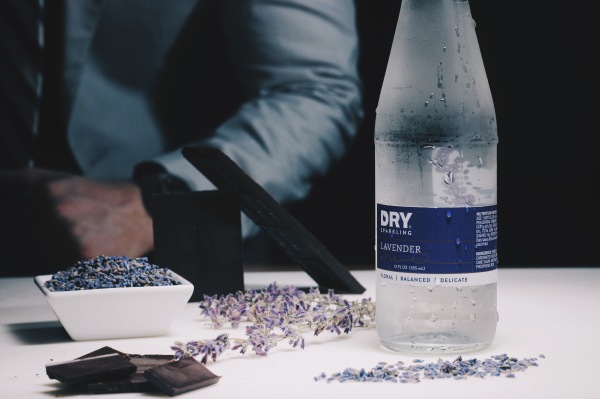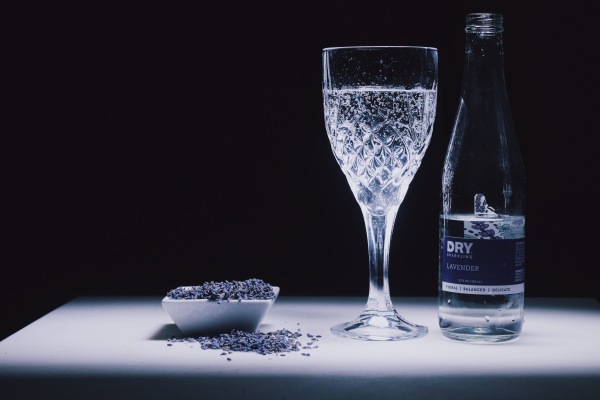History: Seattle, Washington is continually churning out some of the most inventive and artisanal craft sodas on the market. But some of these effervescent elixirs are hidden gems that not everyone knows about. We believe they deserve their day in the sun. Enter Soda Jerk Soda, some of the most creative craft soda on the west coast. Owner Cory Clark had been a cosmetic chemist with a couple stores in Texas, but he was looking for his next project. Something different, he thought. Something cool. “I’m kind of a person that has to be creating something to be happy,” he says. He told us initially he wanted to start an ice cream and soda fountain, but after seeing the success of the Soda Stream, Clark changed his mind and started exploring soda syrups. He quickly changed course again after he realized he preferred fresh ingredients to syrup. It’s hard to disagree there. But before we tell you about the liquid, here’s an example of Clark’s creativeness. Dude sells his soda out of what is essentially a cute-ass baby truck on wheels. He bought it online and customized it himself after being inspired by a Cushman Truckster… aka the next thing I’m drunk buying online. Back to the soda. You won’t find anything traditional on the Soda Jerk Soda truck. It features three taps with two rotating flavors. Strawberry Rhubarb. Lime Cilantro Jalapeno. Lemon Lavender. These are some of the flavors you’ll find in place of classics like root beer or cola. “I try to pair an herb or spice with the ingredient,” Clark notes. Soda Jerk Soda also always uses organic cane sugar and fresh ingredients with as many sourced locally from Washington as possible. Clark adds he uses organic ingredients whenever he can. There are also no preservatives in Soda Jerk Soda. Hipsters everywhere should be lining up for this stuff.
Lemon Lavender is one of the first flavors Clark created and to this day it’s the company’s best seller. It’s also the only flavor consistently available on tap. Fresh lavender flowers from Washington are used in the soda instead of lavender extracts in order to make the soda taste as authentic as possible. What’s really interesting about Clark’s process is that he doesn’t cook down his ingredients. He just uses hot water for steeping the herbs and melting down the sugar. He says he does this to ensure “the flavors are very bright and strong.” The Lemon Lavender soda contains 12.5 % juice. Time to ingest the freshness.
Where to get: Soda Jerk Soda is one of those local-only craft sodas, so you’ve gotta be in the Seattle area or going to the city to get a taste. Clark told us he’s looking into shipping methods, but as of fall 2015, it was still quite a ways off due to high costs for both parties. Here’s a list of where to find Soda Jerk Soda in Seattle.
Nose: Strong lavender. Mild lemon-lime tucked behind the lavender. The scent wavers between sweet, floral, and savory. A big nose on this soda.
Taste: Tart; sweet lavender; lemon. Definitely a floral/botanical soda, but uncharacteristically sweet for a soda in that flavor zone. The flavors here are big and bold. This looks like pink lemonade, but is defined by the lavender taste that permeates each sip. There’s a quick rush of light carbonation at the beginning of the drink, quickly followed up by tart lemon and sweet lavender. This is initially more tart than sweet, which makes it very crisp. The lavender does give the soda a bit of an herbal taste, but it’s a sweet one. While lavender really shines in the first half of the drink, lemon takes over the second half of each sip. It’s interesting; the lemon becomes sweeter, while the lavender begins packing a bit of zing and tasting more savory, along the lines of a tart lavender tea. The lemon and lavender taste fresh and don’t make your taste buds over think. Overall, it’s a pretty even mix of sweet to sour, though I’d give the nod to the former. There’s a lot going on for just two main flavors, but luckily, this artisanal soda isn’t overly complicated.
Finish: Herbal lavender, almost like a tea with subtle tart lemon in the background.
Rating: What makes this soda interesting is the Jekyll and Hyde personalities of its two flavors, lavender and lemon. Initially the lavender is sweet and the lemon is tart, but on the back half of each sip, the roles are reversed. I’ve never tasted that before in a soda that relies so heavily on just two ingredients. Really takes your taste buds for a ride. Reminds me of that one night last year in Vegas… never mind. The standout flavor of the two is lavender. It’s very bold and very floral. Again, at times it’s very sweet, almost a little fruity. Near the finish, it becomes more tart and savory, imparting a botanical flavor. What I want to stress is this: the lavender taste in this soda is not a candied flavor. You can really taste the lavender flowers. Super, super authentic and flavorful. Lemon was a great companion flavor to pair with the boldness of the lavender. It helps reign in the soda’s overall flavor profile and adds a nice zing. For some, this won’t work because they simply can’t adjust to lavender in liquid form. For others, this might be a little too tart or herbal. Personally, I enjoy how the tartness lingers throughout each sip. I actually wouldn’t mind seeing the sweet lemon flavor enhanced in addition to that tartness. Soda Jerk Lemon Lavender is also really wonderful with dark rum for a simple, balanced, and flavorful night cap. Lavender is, of course, known for its sleep properties. The bottom line about Soda Jerk Lemon Lavender soda is that it tastes remarkably fresh and crisp. The two flavors work well in tandem and are bold on the palate. You’d be missing out if you didn’t indulge your taste buds in this unique, split personality of an artisan soda.





















